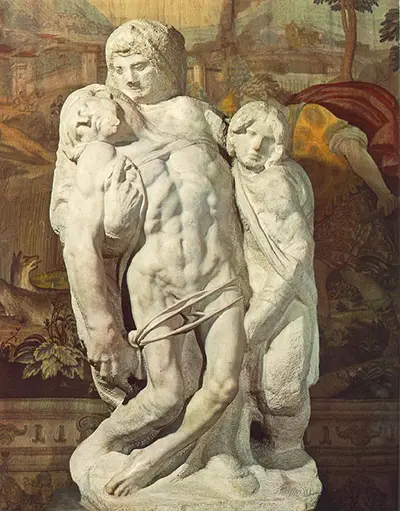The sculpture itself stands at around two and a half metres tall and can now be found in the Galleria dell'Accademia in the city of Florence, Italy. It was produced using only marble, though that is consistent with all of the potential names linked to it as that was the most common medium for sculpture through the Italian Renaissance. Records have shown that in 1756 the Palestrina Pietà was attributed directly to Michelangelo for the first time, though now information can be found to provide any evidence to back up that decision. The content and theme is entirely suitable for this great Florentine artist as he produced several other Pietas during his career, but it is the style of this piece which has raised question marks about that attribution. Put simply, most experts agree that the detail is too heavily delivered to be worthy of the great master, but in truth the likes of Menghini and Bernini were also highly skilled, subtle sculptors themselves.
The sculpture found here was originally displayed in the Santa Rosalia church in Palestrina, which is a district of the Italian capital, Rome. The body of Christ is seen being held up by two other figures in this emotional and powerful sculpture. The Italian government purchased the piece as recently as 1939 and despite the confusion and controversy of its correct attribution, it is still a particularly valuable piece. Sadly, there is little discussion about this piece prior to the 18th century, but once the connection to Michelangelo had been made it has been discussed and challenged ever since. Most of his other pieces have been researched ever since their creation but that is not the case with this one, further adding to the mystery that still surrounds it.
The Galleria dell'Accademia in Florence, Italy hosts this piece. It has also been home to the artist's David for over a century and originally had aimed itself as being the Michelangelo Museum which it felt was needed within the city. Sadly, since then some of its collection has gone elsewhere but there is still an exceptional collection of Renaissance art to be found here. It has a carefully crafted room in which the David sculpture takes centre stage, and previous to its location here the item was actually displayed outdoors which slowly led to issues around its preservation for future generations. Thankfully, common sense prevailed eventually and it now resides indoors but is accessible to the public pretty much all year round. Alongside the remaining items from Michelangelo's career that the gallery still own, you will also discover some other great names here too, such as Paolo Uccello, Domenico Ghirlandaio, Sandro Botticelli and Andrea del Sarto. Whilst the Galleria dell'Accademia can sometimes be overshadowed by other galleries and museums within the city, it still is an essential gallery to visit for those interested in this period of art history.


